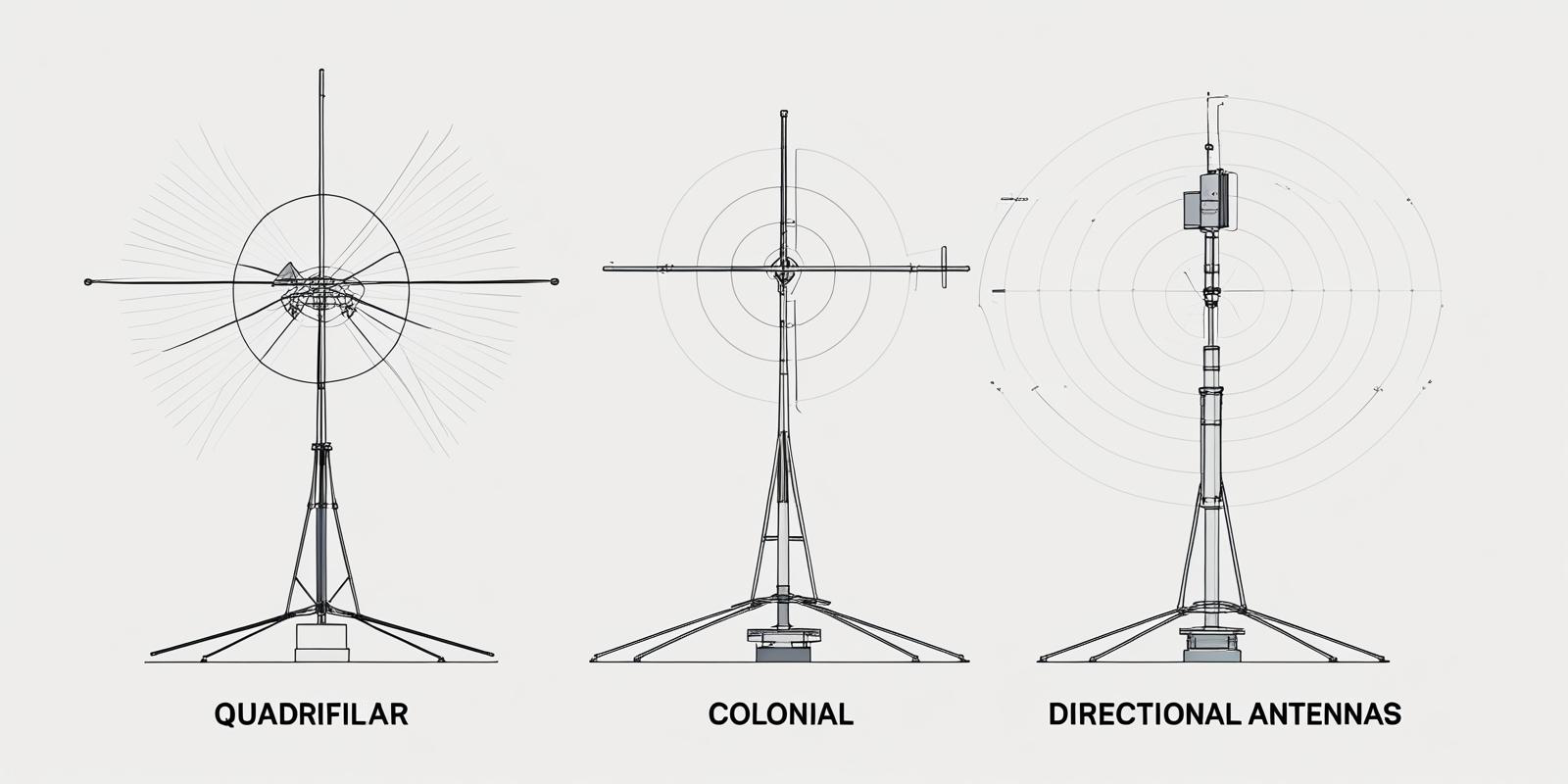Comparison of Quadrihelical, Collinear, and Directional Antennas in Electronic Warfare Systems

In modern warfare, information has become a critically important resource, and the ability to detect, intercept, or suppress enemy signals provides a strategic advantage. This is why electronic warfare (EW) is constantly evolving — and with it, the antennas used as key components in signal detection and countermeasure systems.
In this article, we will examine three types of antennas — quadrihelical, collinear, and directional — and compare their effectiveness in various EW scenarios.
Quadrihelical Antennas: Omnidirectionality and Compactness
Advantages:
- Omnidirectional signal reception in the horizontal plane
- Compact size, allowing integration into UAVs, backpacks, and portable systems
- Wideband performance — effective operation across a broad frequency range
Disadvantages:
- Limited signal detection range due to even energy distribution
- Lower sensitivity compared to directional antennas, especially with weak signals
Application in EW:
Quadrihelical antennas are ideal for detecting signals from all directions, spectrum monitoring, and operating in dynamic environments. They are often used on mobile platforms (e.g., drones), where flexibility and low weight are critical.
Collinear Antennas: A Balance Between Directionality and Coverage
Advantages:
- Vertical polarization and narrow beamwidth in the horizontal plane
- Sector-based coverage — possible to combine multiple collinear antennas for full 360° coverage
- Moderate gain — an effective compromise between omnidirectionality and signal strength
Disadvantages:
- Performance depends on positioning — proper orientation is needed for full coverage
- Less flexible than quadrihelical antennas
Application in EW:
Collinear antennas are widely used in ground-based EW systems operating in sector mode or under partial space scanning. They are suitable for jamming enemy communication channels or intercepting signals from a specific direction.
Directional Antennas: Power and Precision
Advantages:
- Maximum signal gain within a narrow beam
- High accuracy in signal source localization
- Much greater operational range than quadrihelical or collinear antennas
Disadvantages:
- Limited field of view — effective only in the intended direction
- Require precise orientation, often involving rotating mechanisms or tracking systems
Application in EW:
Directional antennas are used for targeted signal jamming, such as disabling drone control systems or precisely detecting and neutralizing signal sources. They are also essential in radio reconnaissance.
Choosing the Right Antenna for EW Systems
The choice of antenna type in electronic warfare systems always depends on the specific task. For spectrum control in dynamic environments, quadrihelical antennas are most suitable. For effective sector-based suppression or high-precision jamming, collinear or directional antennas are the better choice.
At Argument Technologies, we develop solutions tailored to various EW scenarios — from mobile systems to stationary complexes with intelligent antenna arrays. Contact us to receive a solution that fits your mission.
